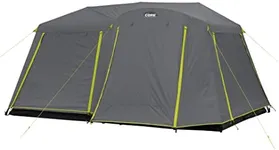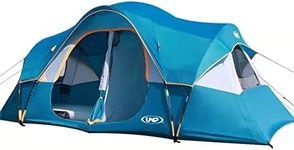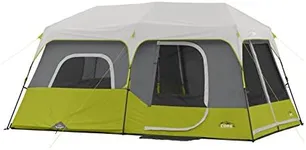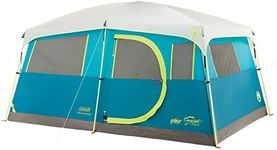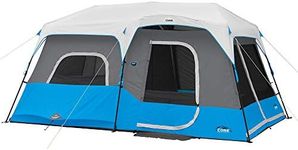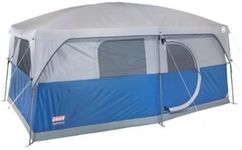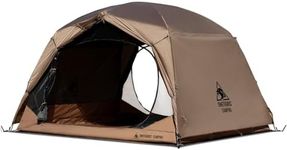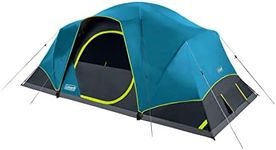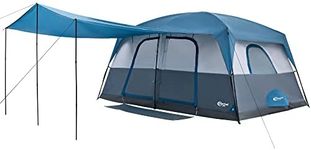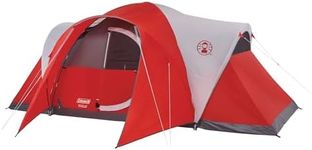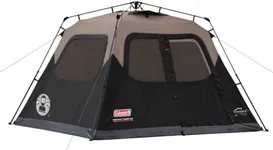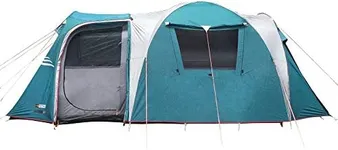Buying Guide for the Best 9 Person Tents
Choosing a 9-person tent is all about finding the right balance between space, comfort, and practicality for your group. Whether you're camping with family or friends, it's important to consider how you'll use the tent, the conditions you'll face, and the features that will make your trip enjoyable. Think about how much room you really need, how easy the tent is to set up, and what kind of weather protection is necessary for your adventures. By understanding the key features, you can make a choice that keeps everyone happy and comfortable during your camping trips.Floor Space and LayoutFloor space refers to the total area inside the tent, usually measured in square feet or meters. This is important because it determines how much room each person will have for sleeping and storing gear. Some 9-person tents offer a single large open area, while others have dividers or separate rooms for privacy. If your group values personal space or plans to bring a lot of gear, look for tents with more generous floor space or multiple rooms. For groups with kids or couples, room dividers can be a great way to create separate sleeping areas.
Peak HeightPeak height is the tallest point inside the tent, usually measured in inches or centimeters. This matters because it affects how easy it is to stand up and move around inside. Tents with higher peak heights allow most adults to stand upright, making changing clothes or moving gear much easier. If you want a tent that feels roomy and comfortable, especially for longer trips, look for a higher peak height. If you only need the tent for sleeping, a lower profile might be fine and can be more stable in windy conditions.
Weight and Packed SizeWeight and packed size describe how heavy the tent is and how much space it takes up when packed away. This is important if you need to carry the tent any distance from your car to your campsite. Heavier and bulkier tents are usually more spacious and sturdy, but can be harder to transport. If you’re car camping and don’t need to carry the tent far, weight may not be a big concern. If you need to hike to your campsite, look for lighter and more compact options.
Weather ResistanceWeather resistance covers how well the tent protects you from rain, wind, and sometimes even snow. This is usually determined by the tent’s materials, waterproof coatings, and the design of the rainfly and seams. If you expect to camp in wet or windy conditions, look for tents with a full-coverage rainfly, sealed seams, and sturdy poles. For fair-weather camping, basic weather protection may be enough. Always consider the typical weather where you’ll be camping most often.
VentilationVentilation refers to how well air flows through the tent, which helps reduce condensation and keeps the interior comfortable. Good ventilation is provided by mesh windows, roof vents, and doors. If you’re camping in warm or humid climates, look for tents with plenty of mesh panels and adjustable vents. For cooler climates, you may want fewer mesh areas to help retain warmth, but still ensure there’s enough airflow to prevent stuffiness.
Ease of SetupEase of setup describes how simple and quick it is to pitch the tent. Some large tents use color-coded poles or instant setup systems, while others require more time and effort. If you’re new to camping or want to save time at the campsite, look for tents with straightforward setup instructions and features that make assembly easier. If you don’t mind spending extra time setting up, you might prioritize other features over quick setup.
Doors and AccessThe number and placement of doors affect how easily people can get in and out of the tent, especially at night. More doors mean less climbing over others and better access for everyone. If your group includes early risers or people who need to get up during the night, multiple doors can make things much more convenient. Consider the size and location of the doors based on your group’s needs.
